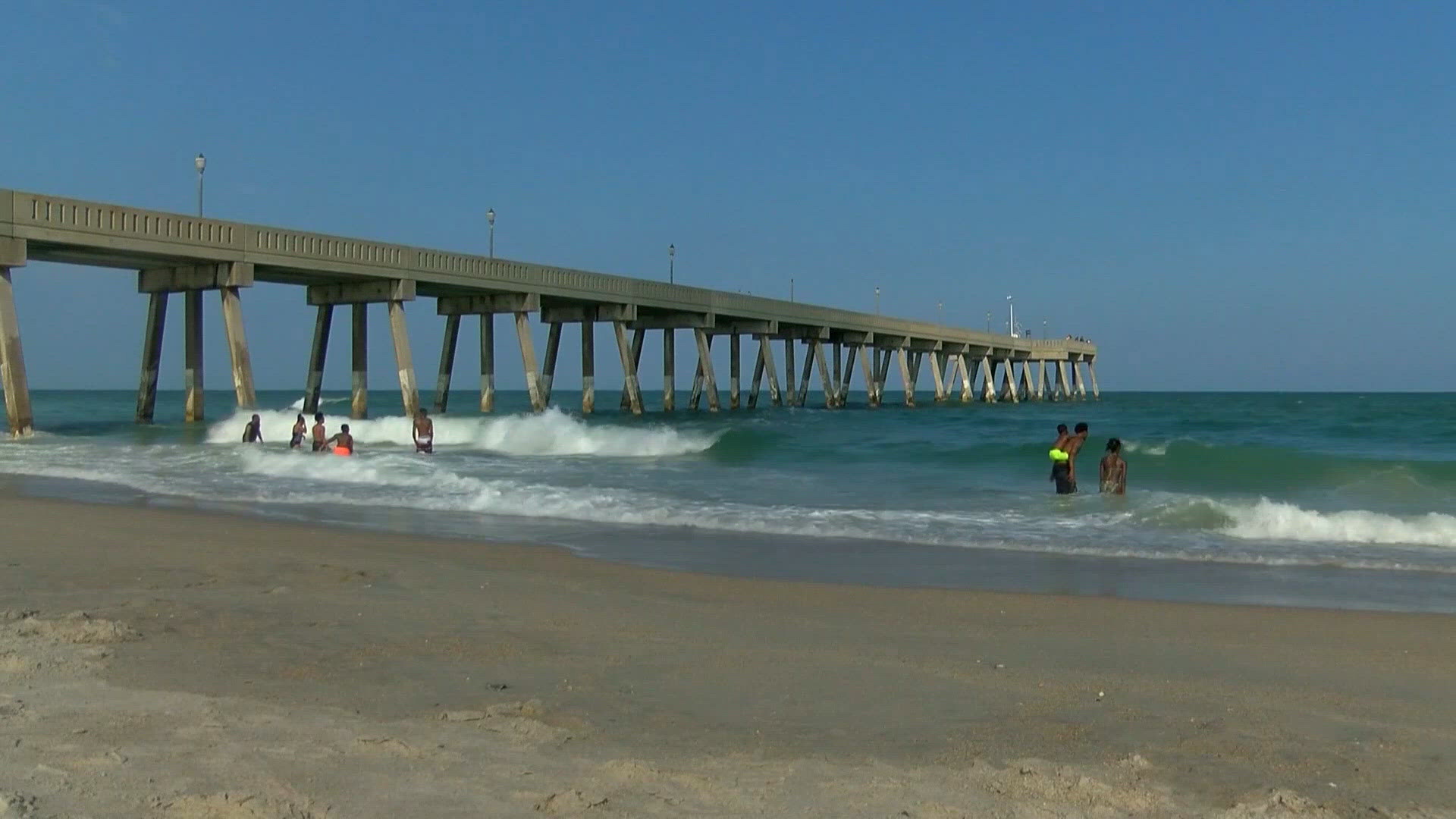NORFOLK, Va. — Beaches are one of the go-to places for relaxation. And that's even better for Hampton Roads because the beach is in our backyard! Of course, one of the thrills of being at the beach is having fun in the water.
Sometimes though, rip currents can ruin that fun.
Rip currents form when waves break apart on the shoreline and between those waves, a channel is created to pull the beached water back into the ocean. These rip currents happen every day at any beach – most happen during low tide and are generally too weak to pose serious threats to swimmers.
However, the suction can become stronger when storms or tropical systems in the area stir up more water and make the waves taller. What's more, as wave heights grow, the speed of rip currents also increases.
When the pull of the currents becomes strong enough, swimming in the ocean can be dangerous or even life-threatening.
If you get caught in a rip current, stay calm and don’t fight the current. Then, swim parallel to the shoreline. This will help you escape the current. Swimming against the current will not help and instead, will cause you to burn a lot of energy.
So far in 2024, there have been 33 rip current-related deaths in the U.S. In our local area, one man drowned from a rip current near Nags Head back on July 3, according to the National Oceanic and Atmospheric Administration (NOAA).
In general, it's always best to swim with a life jacket on or in the presence of others. Staying within the view of a lifeguard is a great practice.
That’s how your weather works!

